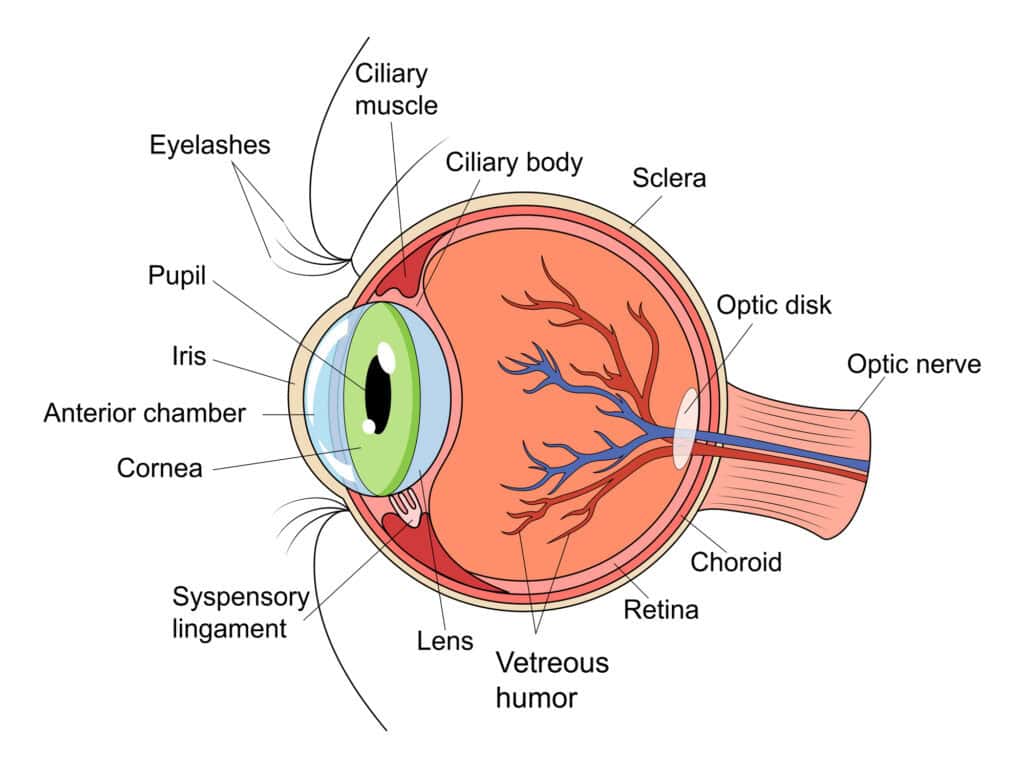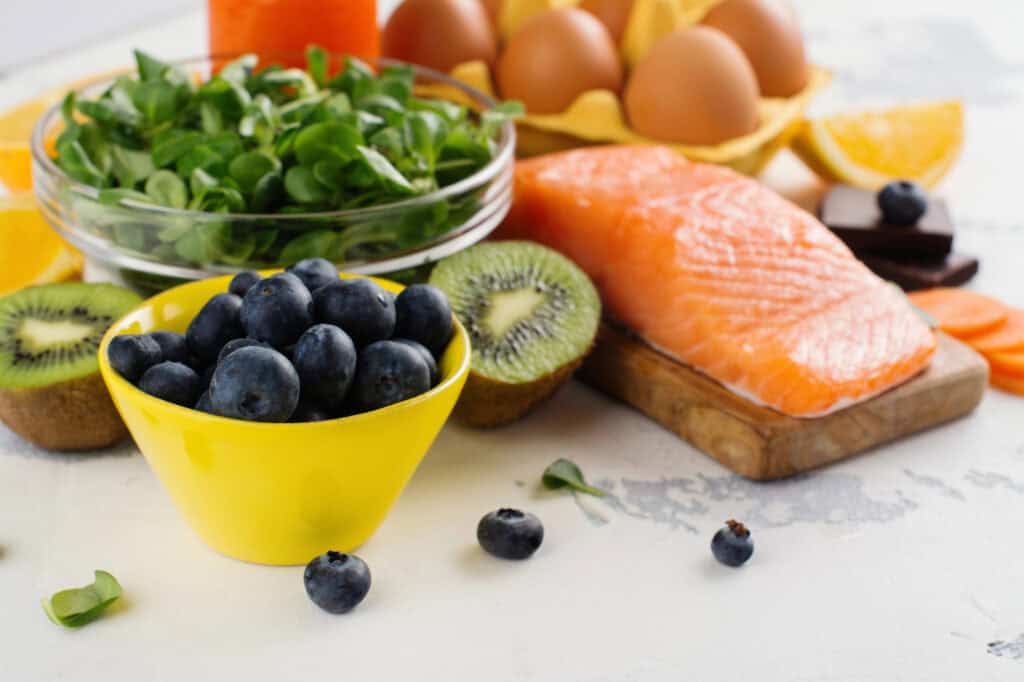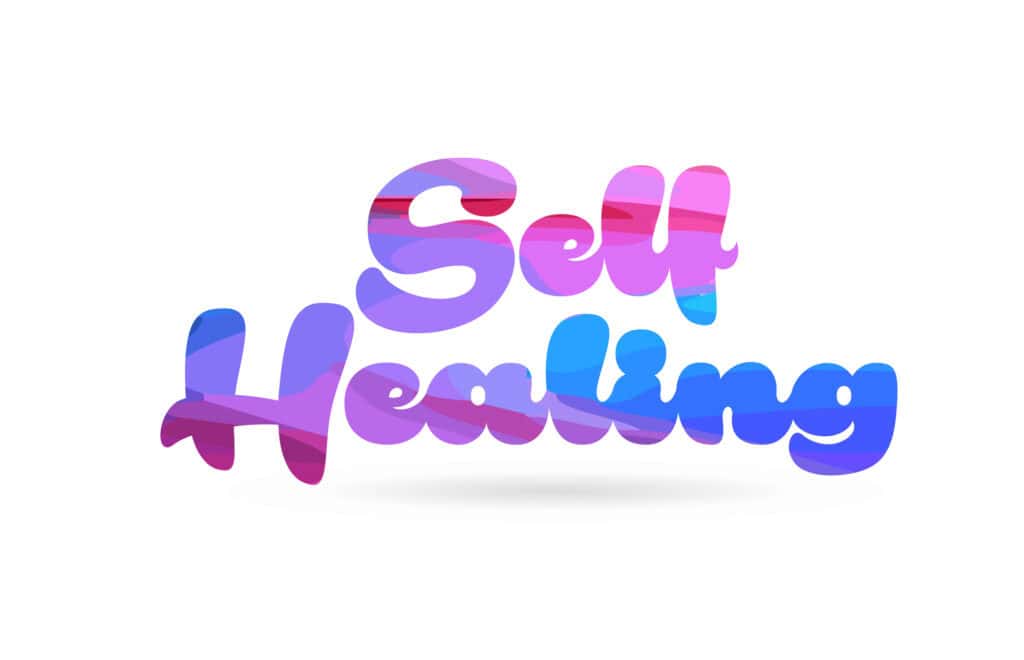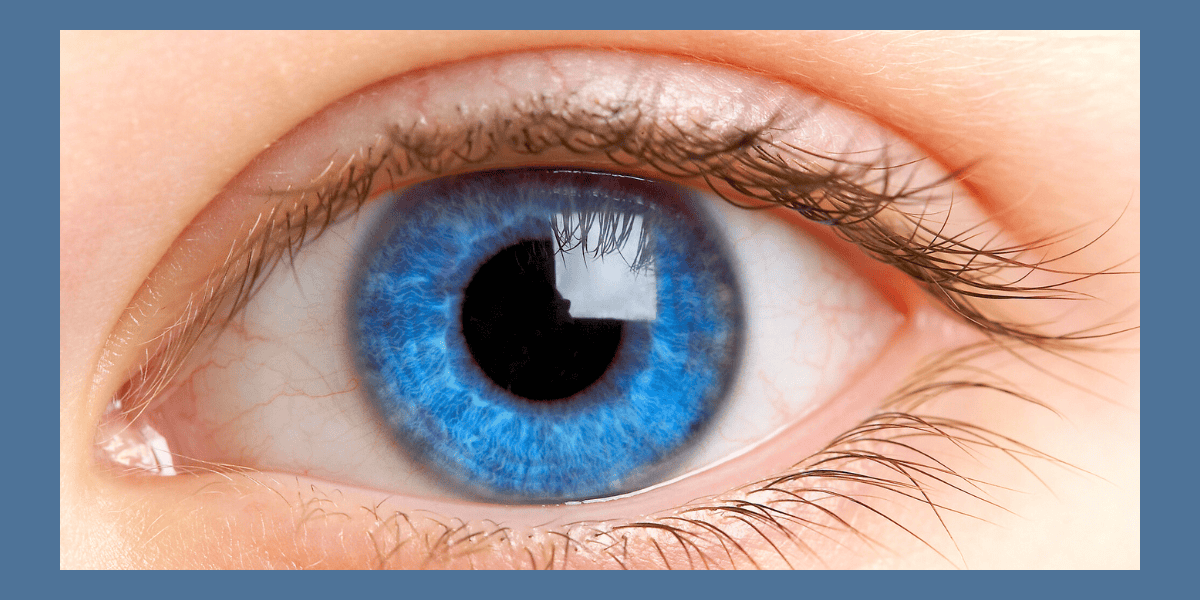EDITOR’S SUMMARY: Windows to the soul. The spark of energy exchanged human to human, and between humans and animals. Your eyes facilitate this connection, and in addition to making sense of the world through vision, this phenomenon is like no other. And like all parts of the body, your eyes are susceptible to fatigue, improper functioning, and injury. It’s never too early, and you are never too young to use food as prevention to support the health of your eyes.
Written by Jennifer Wolff-Gillispie HWP, LC
Edited by Nicki Steinberger, Ph.D.
Among the array of human senses, vision reigns supreme, offering a portal into the world around you. However, amidst the hustle and bustle of modern life, your eyes face a host of challenges, from screen-induced strain to age-related decline. Fortunately, nature has endowed you with the power to safeguard and even restore your precious vision through the prism of nutrition. If you choose to journey through the intricate landscape of ocular health, it will become evident how the ramifications of poor nutrition on vision, and the dietary keys to unlock a brighter, clearer future are at your fingertips (and maybe in your kitchen right now).
Before delving into the realm of nutrition and its impact on vision, it is essential to grasp the marvel of ocular anatomy and its function. Bahaa Fathy, researcher at Elmkaly, described it beautifully:
“The human eye is a complex and sophisticated organ that is able to capture light and convert it into electrical signals that are sent to the brain, where they are interpreted as images. This process is known as visual perception and is made possible by the intricate structure of the eye, including the cornea, iris, pupil, lens, and retina. The cornea and the eye’s natural lens help to focus the light onto the retina, the light-sensitive layer of cells at the back of the eye.
The retina contains two main types of cells, rods and cones, which are responsible for detecting light and color respectively. The iris controls the amount of light that enters the eye, and the pupil changes size to adjust to different lighting conditions. Additionally, the retina contains a small spot called the fovea centralis, which is responsible for sharp, detailed vision.”

This process culminates with the signals traveling via the optic nerve to the brain, where they are processed into the visual experiences that shape your reality. If there is disruption or obstruction in any of these functions, your vision can be negatively impacted. The most common eye-related problems that occur are refractive errors (nearsightedness, farsightedness and astigmatism), cataracts, age-related macular degeneration (AMD), diabetic retinopathy, and glaucoma. Refractive errors are vision problems caused by the shape of your eye. When the shape does not allow light to bend, ultimately, improper focus will result in blurry vision. This is the most common reason you might need glasses.
Age-related macular degeneration (AMD), the leading cause of vision loss in people over 50, affects the macula (central part of the retina) leading to gradual loss of central vision. There are two main types: Dry AMD, which involves the breakdown of light-sensitive cells in the macula, and wet AMD, which involves the growth of abnormal blood vessels under the macula.
Diabetic retinopathy (a complication from insulin resistance) affects the blood vessels in the retina. Persistent high blood sugar levels can damage the blood vessels, causing them to leak or become blocked. This can lead to vision loss or blindness if left untreated. Glaucoma is a group of eye conditions that damage the optic nerve, often due to high pressure inside the eye. This can result in peripheral vision loss, and if left untreated, may lead to blindness. Glaucoma is often referred to as the “silent thief of sight” because it typically progresses slowly and without symptoms until significant vision loss occurs.
Cataracts, the leading cause of blindness worldwide, occurs when the lens of your eye becomes cloudy, leading to blurred vision, glare, and difficulty seeing in low light. It’s commonly associated with aging, but can also result from injury, medications such as corticosteroids, and medical conditions like diabetes.
The Food You Eat; The Light You See
In the intricate symphony of ocular health, nutrition emerges as a conductor, orchestrating the delicate balance between vitality and vulnerability. From “Foods and habits to improve your eye health in 2024,”Dr. Mohd Haseeb Beg, consultant ophthalmologist at Ujala Cygnus Group of Hospitals explains:
“First, a diet abundant in fruits and vegetables provides crucial vitamins and antioxidants. Leafy greens such as spinach and kale are rich in lutein and zeaxanthin (carotenoids related to Vitamin A), which promote macular health. Additionally, consuming foods high in omega-3 fatty acids, like fatty fish (salmon, mackerel), can contribute to a healthier retina and may help prevent conditions like dry eyes. Antioxidant-rich fruits such as berries, oranges, and kiwi support the eyes by reducing oxidative stress.
Vitamin C, found in citrus fruits, plays a vital role in maintaining the blood vessels in the eyes. Including a variety of colorful fruits and vegetables ensures a diverse range of nutrients beneficial for eye health. Moreover, maintaining a proper balance of micronutrients, including zinc and vitamin E, is essential. Nuts and seeds, such as almonds and sunflower seeds, are excellent sources of vitamin E and can contribute to preventing age-related eye conditions.”
Poor nutrition, on the other hand, can compromise the integrity of eye tissue, and strain other body systems. This can lead to degradation of overall health as well as your vision. Properly caring for your eyes’ nutritional needs may allow you to avoid eye exam procedures and invasive testing and treatments. In the academic article, “Nutrition in the Prevention and Treatment of Disease (Fourth Edition),” this is illustrated succinctly:
“Over the past 25 years, a large body of evidence has emerged suggesting that vitamin supplements could play a role in treating ocular diseases resulting from genetic mutations, and that diet may slow the progression of diabetic retinopathy and common eye diseases, such as age-related cataract, age-related macular degeneration (AMD), and glaucoma. The eye diseases appear to be, in part, ocular manifestations of broader systemic metabolic stress, oxidative stress, and inflammation.”
One of the primary culprits of declining eye health, oxidative stress, is fueled by a lack of antioxidant-rich foods. The retina is particularly susceptible to oxidative damage due to its “high consumption of oxygen,” exposure to light, and environmental pollutants. Studies have linked oxidative stress to various ocular maladies, including age-related macular degeneration (AMD), cataracts, and glaucoma, underscoring the urgency of boosting your dietary defenses.
Furthermore, deficiencies in key nutrients such as vitamin A, lutein, zeaxanthin, and omega-3 fatty acids can impede the eye’s ability to combat inflammation and maintain optimal function. These nutrients serve as building blocks for eye tissues, strengthening structural integrity, and protecting against degenerative processes. Armed with insights from vision professionals and scientific research, it is easy to deduce optimal nutritional sources to fortify and rejuvenate your ocular health. Much less discussed amongst eye doctors and their patients, however, are the types of foods you might avoid, to safeguard or help restore your vision. Let’s take a look at both:

Vision Nutrition “Do’s”
- Vitamin A (retinol): Dubbed the “vision vitamin,” vitamin A is essential for maintaining the integrity of your retina, and supporting low-light vision. It is known as retinol because it helps produce needed pigments in the retina. There are two forms: Preformed vitamin A (animal-based) and provitamin A (plant-based). Adding a diverse array of vitamin A rich foods from both forms daily in foods such as wild salmon, organic pastured eggs, grass-fed/finished beef liver, organic green leafy vegetables and orange/yellow produce, including carrots, sweet potatoes, yellow peppers, and mangos, will ensure you have an adequate daily intake. Just 3 ounces of cooked liver has 6,582 mcg (micrograms) of vitamin A, which is 731% of your daily value (DV). If you do not enjoy eating liver it can be taken as a supplement. If you can not stomach liver in any form, 3.5 ounces of bluefin tuna has 757 mcg of retinol, or 84% DV.
- Lutein and Zeaxanthin: These potent antioxidants are organic red, orange, and yellow pigments (plant dyes) called carotenoids. They form a protective shield against harmful blue light and oxidative stress, safeguarding your macula—the portion of the retina critical for sharp vision. Lutein and zeaxanthin levels in your eyes are completely dependent on your dietary intake. To increase your levels, incorporate organic, pastured egg yolks and organic (non-GMO) corn, as well as vibrant red and yellow fruits, vegetables, and spices, such as oranges, red peppers, yellow squash and paprika. Additionally, you may select green leafy vegetables and herbs including spinach, chard, beet greens, and parsley.
- Omega-3 Fatty Acids: Renowned for their anti-inflammatory properties, omega-3 fatty acids play a pivotal role in preserving retinal health and mitigating the risk of AMD. Fatty fish such as wild salmon, mackerel, herring, and sardines are great sources of these beneficial fats. Organic pasture-raised eggs and grass-fed/finished meats are good sources as well. You can augment your omega-3 intake with flaxseeds, chia seeds, hemp seeds, walnuts, and cruciferous vegetables like cabbage and broccoli, which are especially important if you consume a vegetarian or vegan diet, or simply prefer not to eat fish.
- Hydration: While often overlooked, adequate hydration is fundamental for maintaining the suppleness of ocular tissues, and to ensure proper tear production, essential for lubricating your eyes and preventing dryness. Sipping on clean, filtered water throughout the day, and incorporating hydrating foods such as cucumbers, watermelon, and celery into your diet can help fulfill your hydration needs. One ounce of water per pound of body weight is a good rule of thumb when calculating your consumption.
- Bilberry: In a similar family with blueberries, huckleberries, and cranberries, bilberries (also known as Vaccinium myrtillus) grow wild in North America. They provide protection against oxidative stress thanks to their abundance of anthocyanins. They can strengthen collagen fibers in the capillaries, stabilize tear production, and improve circulation in the eyes. Most often consumed as an extract, bilberry can decrease eye strain and fatigue, and improve conditions associated with diabetic retinopathy.
- Glutathione: Arguably one of your body’s most powerful antioxidants to combat free radicals, glutathione (which you produce naturally) can become depleted from stress, a poor diet high in fructose, and certain medications. Low levels are associated with cataracts, glaucoma, and neurodegenerative disease. To enhance your naturally-occurring levels, eat foods rich in sulfur. Beef, fish, poultry, cruciferous vegetables (cauliflower and brussel sprouts), and alliums such as garlic, shallots, and onions are great sources.
- The trace mineral selenium is an important cofactor for glutathione production, so add foods like organ meats, tuna, and Brazil nuts which are naturally packed with it. Other foods such as chicken, cottage cheese, brown rice, and eggs also contain moderate amounts. Additionally, the amino acid cysteine is an integral part of glutathione synthesis. Whey protein is a known source which is found in milk and milk products, but can also be used as a powdered supplement to add to smoothies.
Finally, foods that are naturally rich in glutathione itself include avocados, asparagus, and okra. While you may be tempted to skip the selenium and cysteine and just focus on glutathione, don’t. They both have additional important roles in bodily functions, including protecting against cell damage, and aiding in DNA synthesis, collagen production, and immune function.
Vision Nutrition “Don’ts”
- Simple Carbohydrates: Breads, pastas, rice, oats and ultra-processed foods, including crackers, chips, cookies, “nutrition” bars, and cereals, break down quickly in the body and cause a spike in blood sugar, which over time can cause insulin resistance, a precursor to type 2 diabetes. One study has shown a link between high glycemic foods (how quickly a food converts to sugar in your bloodstream) and age-related macular degeneration, while another study has shown a link between elevated carbohydrate consumption and glaucoma. Depending on your metabolic health, carbohydrates such as organic sprouted wheat tortillas or sourdough einkorn bread may be okay to incorporate in your diet. Avoid highly-processed, enriched grains and be mindful of using them as “fillers” in your diet. Most importantly, be aware that everyone’s ecosystem is different, and yours may be more “tolerant” or sensitive to grains than others. Listen to your body.
- Sodium: It is sodium, not necessarily salt, that can elevate your risk for hypertension. Eating too much can damage the blood vessels in your eyes. This may cause a buildup of fluid under the retina blocking blood flow which can lead to impaired or lost vision. Canned, boxed, and frozen snacks and meals, along with highly-processed meats with nitrites/nitrates (hot dogs, deli meat and bacon) are loaded with not only added salt, but some have sodium-derived preservatives increasing your risk. Find healthier organic replacements that use high-quality ingredients (including real salt), and don’t include the chemical preservatives high in sodium. You can also make your own foods like breakfast sausage patties with grass-fed/finished ground beef, sea or celtic salt, and organic spices, so that you are in control of all the ingredients.
- Hydrogenated Oils, Trans Fats, Vegetable and Seed Oils: With the growing body of evidence proving how detrimental these fats are for your health, Dr. Chris Knobbe, board certified ophthalmologist believes in avoiding them altogether. From “Fats to Avoid/Fats to Include for Macular Degeneration”:
“The retina of the eye is abundant in fatty acids (yet another crucial use of fat in our bodies), and therefore our eyes need the right kinds of fats to remain functional and structurally sound over our entire lifetime. Dr. Knobbe’s extensive research and clinical observations led him to argue that our sky-rocketing consumption of refined vegetable oils and trans-fats over the last century is one of the most critical factors in the increasing prevalence of AMD today.
Vegetable oils and trans-fats, which include soybean, canola, corn, and cottonseed oils, as well as hydrogenated and partially-hydrogenated oils, undergo extensive heat and chemical processing. By the end of that process, they are oxidized (damaged) and cause inflammation to all the tissues in our bodies, including our eyes.”
In this study, “Dietary Fat and Risk for Advanced Age-Related Macular Degeneration,” from JAMA Ophthalmology, there is a specific link between higher vegetable fat consumption and an associated elevated risk for age-related macular degeneration (AMD).
- Refined Sugars: Soda, candy, and table sugar are obvious sources, but when you become a label reader, you will see how processed sugars are hidden in so many products. Offering zero nutritional benefit (other than calories), high sugar intake is implicated in diabetic retinopathy, glaucoma, cataracts, and AMD. Avoid excess sugar consumption, or if possible eliminate it completely.

While long-standing and emerging research shows a well-established link between diet and halting or preventing eye-related diseases and disorders, little is known about how dietary nutrition can actually reverse them. A quick glance at the National Eye Institute, and you’ll notice, ”There’s no cure for glaucoma.” However, as you dig deeper, and listen to personal testimonies, you’ll likely find a different perspective.
Billy R. Hammond Jr., PhD, at the University of Georgia in Athens, explained why many people feel the need to use supplements today to achieve what was once attainable when humans were eating a diverse, natural diet:
“Somewhere between 60 and 70 percent of all the food eaten on planet Earth today comes from about 10 species—corn, rice, cows, for example,” said Dr. Hammond. “These have been altered and grown to be high yield, yet less nutritious, and there are biological consequences to this.”
August L. Reader III, MD, at Pacific Eye Associates in San Francisco, goes on to support this assertion by adding his own take:
“Our systems are still geared for the Paleolithic diets we had many thousands of years ago and not for processed foods containing refined grains, fats, sugar, salt, and additives.”
You may feel called to use supplements to ensure you are achieving your recommended daily allowance (RDA) of particular vitamins and nutrients. If you are like Dr. Hammond and many others, feeling concerned about not getting appropriate nutrition from your diet, even while eating an abundance of organic produce and pastured meats, is a common sentiment. If you do choose to supplement, source high-quality only (food based, not synthetic), and without unnecessary fillers or additives in the “other ingredients.”
However, regardless of their potency and purity, supplements can never replace the life force energetic qualities of whole, pesticide-free, organic foods. Sourcing and preparing these foods may not be as easy as taking a pill or powder, but the impact on your quality of life seems worth it. Fresh squeezed organic juices and smoothies (be mindful of concentrated sugar intake) allow you the opportunity to ingest an array of nutrient dense ingredients in one sitting, like taking a supplement. Find the balance of what works best for you, and above all else, make sure you are getting the nutrition you need.
In the grand tapestry of human health, ocular wellness emerges as a true indicator—a lens into your body’s state of being. Heed the call to nourish your body (and vision) with the kaleidoscope of delicious colors that abound at the farmers market. And it’s not just the colorful foods that sustain and heal you. Pasture-raised meats and organic, pastured eggs, as well as wild caught fish, are just as beneficial as organically-grown produce. The key to a good “diet?” Whole, high-frequency, minimally-processed foods, without additives or preservatives. These are the foods that nourish and stave off the acquisition and advancement of diseases, including the ones that affect your eyes.
~
Published on June 06, 2024.
If you’ve found value in this article, please share it!
To support the research and health education of AVFC editorial, please consider making a donation today. Thank you.

